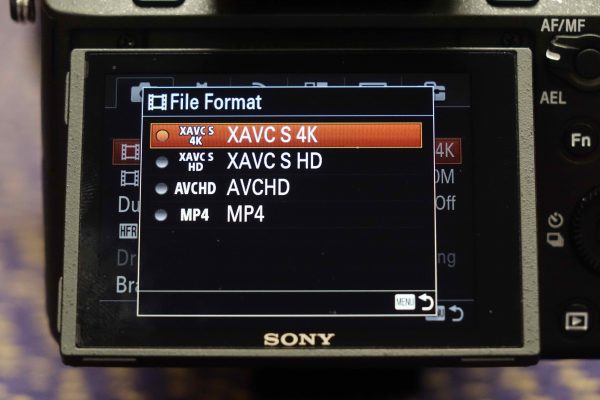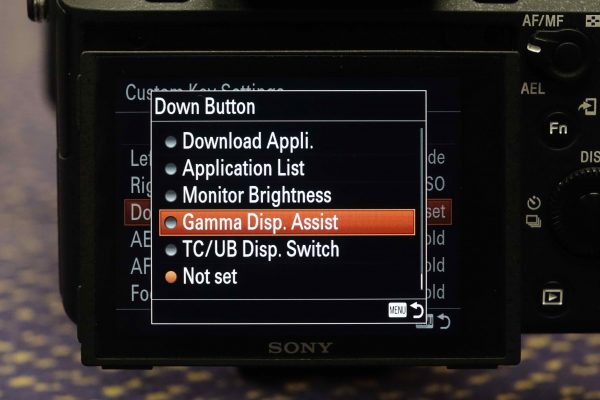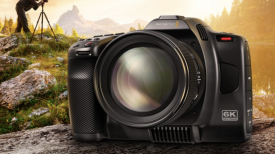By technical editor Matt Allard:
Sony surprised everyone at IBC by not only announcing the FS5 but also the second incarnation of the a7S. The camera combines the low light sensitivity of the original A7s with the refreshed body and grip, internal 4K recording and image stabilisation of the more recent a7R II.
Internal 4K recording at 24/25 and 30p is a welcome addition to the a7S II although it’s going to be interesting to see whether there will be overheating issues doing so. The camera is also capable of shooting 120fps at 1080p.
The camera body is almost identical to the a7R II and it also features the same five axis image stabilisation, that has been tuned to work on the a7S II. For low light shooting Sony are claiming that the a7S II is better by approximately 2 stops than the a7R II.
Sony told me that the sensor in the a7S II is almost identical to that of the a7S and they both share the same base ISO of 3200 and 14 stops of dynamic range. The only difference between the sensors is that the colour science has been tweaked on the a7S II and should offer results that are similar to that of the a7R II. This is something that a lot of Sony fans will be very pleased to hear as the a7R II seems to offer more pleasing skin tones than that of the original a7S.
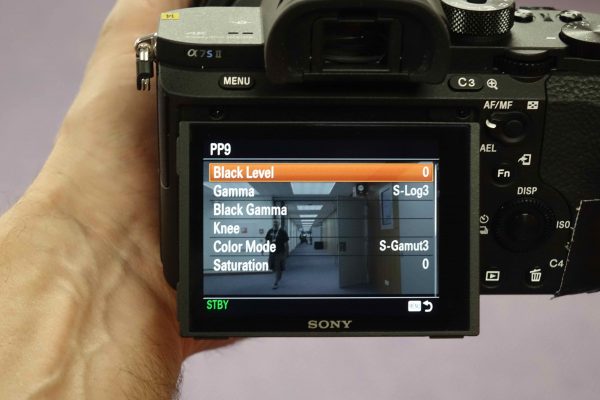
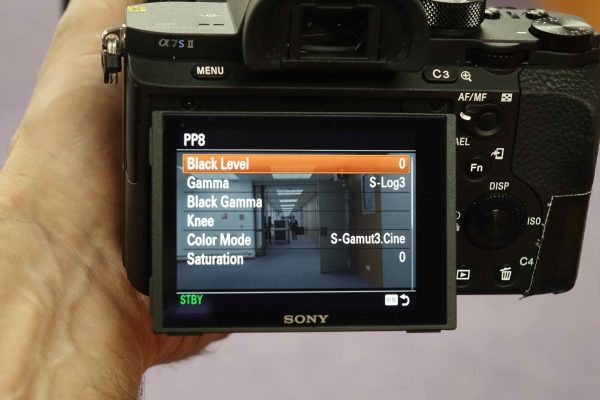
All the same picture profiles that were on the a7S can be found on the a7S II, but there are two new additions. Along with S-Log 2 there is now the option to choose either S-Log 3 or S-Log3 Cine for what Sony claims is a more filmic look. The base ISO when using S-Log3 or S-Log3 Cine gammas has been lowered to 1600 ISO instead of the 3200 for S-Log2 on the a7S.
Another new feature is the Gamma Display Assist which allows you to use a sort of LUT to help display S-Log3, S-Log 3 or S-Log3 Cine to help with focussing and give you an idea of how your footage may look once it has been graded. There are three different Gamma Display Assist options to choose from: Auto, S-Log2 709 (800%) and S-Log3 709 (800%). The Gamma Display Assist function can be added to any user button for easy access.
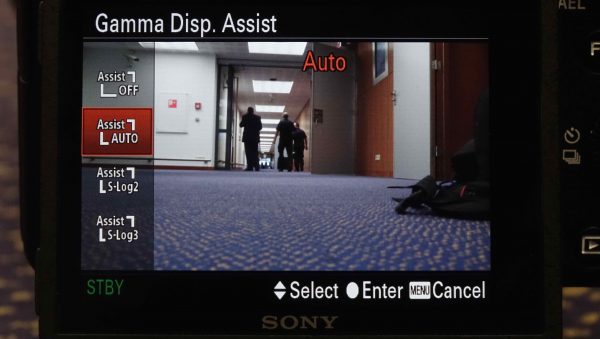
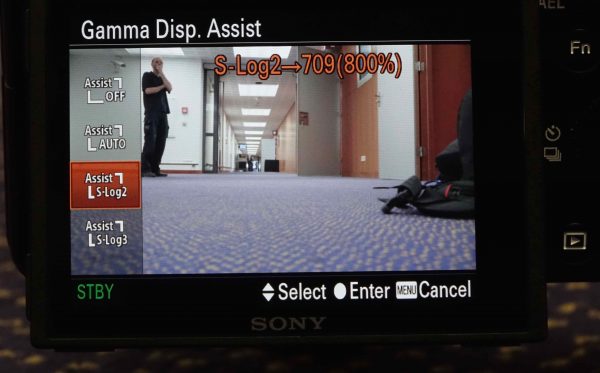
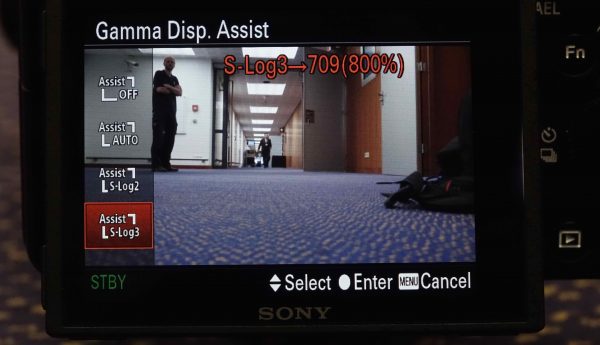
Sony have told me that as the a7S II doesn’t do any pixel binning when capturing 4K in full frame mode it will offer a lot better performance than the a7R II. As there is significantly less pixels than the a7R II there is no way to record 4K internally in APS-C crop mode, you can only record 4K internally in full frame mode.
As far as battery life goes, Sony have said that you should expect to see similar levels of performance of that of the a7R II.
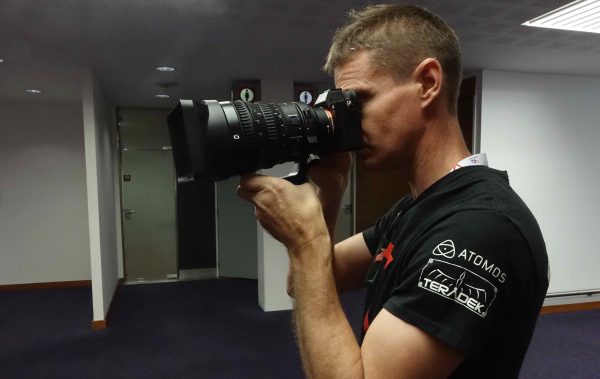
Spec list from Sony:
Standard ISO 100 – 102400, Expandable to ISO 50-409600
QFHD: 3840 x 2160. Internal recording and HDMI output, both at 4K resolution, are available in full-frame
SDXC memory card higher than Class 10 is required for movie recording in XAVC S format In 24p/30p 1920×1080
UHS Class 3 memory card is required for recording at 100Mbps
Full-frame 35mm 12.2 Megapixel Sensor
Full Pixel Readout (no binning) of Entire Sensor Means No Aliasing
Shoot 4K UHD Using the Full-Frame Image Area
3840 x 2160: 30 fps, 24 fps, 25 fps
1920 x 1080: 120 fps, 100 fps
1920 x 1080: 60 fps, 50 fps, 30 fps, 25 fps, 24 fps
XAVC S 4K: 3840 x 2160 (30p/100Mbps, 30p/60Mbps, 24p/100Mbps, 24p/60Mbps)
XAVC S HD: 1920 x 1080 (60p/50Mbps, 30p/50Mbps, 24p/50Mbps, 120p/100Mbps, 120p/60Mbps)
AVCHD: 1920 x 1080 (60p/28Mbps/PS, 60i/24Mbps/FX, 60i/17Mbps/FH, 24p/24Mbps/FX, 24p/17Mbps/FH)
MP4: 1920 x 1080 (60p/28Mbps, 30p/16Mbps), 1280 x 720 (30p/6Mbps)
ISO 100 – 102400, Expandable to ISO 50-409600
0.5″ 2.36m-Dot XGA OLED Tru-Finder EVF
S-Gamut3.Cine/S-Log3
New Gamma Assist Display
Enhanced Zebra Function
HDMI Output: [NTSC] 3840 x 2160 (30p/24p) / 1920 x 1080 (60p/24p) / 1920 x 1080 (60i), YCbCr 4:2:2 8bit/ RGB 8bit
5-Axis Image Stabilization
30 Minute Clip Length
Availability: November 2015
Price: Around 3400 Euros

